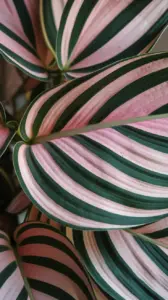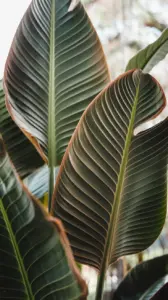Biological Features of Piper Crocatum
Piper Crocatum, a member of the Piperaceae family, exhibits unique biological characteristics. This plant has a distinct appearance with its broad, heart-shaped leaves. Each leaf typically displays a vibrant green color, often with striking maroon speckles. Its leaves can reach up to 20 centimeters in length, providing a lush appearance.
Growth Habit and Structure
The growth habit of Piper Crocatum is primarily upright. It can grow up to 1 meter in height, making it suitable for various indoor and outdoor settings. The stems are slender and green, complementing the foliage well. Additionally, the roots tend to be fibrous, supporting its growth in well-drained soil.
Reproductive Features
Piper Crocatum produces small, inconspicuous flowers that are not the main attraction. These flowers are typically greenish or white and cluster in small spikes. Flowering usually occurs during the summer months, leading to fruit development.
Environmental Preferences
This plant thrives in warm, humid environments. It prefers indirect sunlight and can tolerate low light conditions. For optimal growth, maintaining a temperature range between 18°C and 30°C is recommended.
Table of Biological Features
| Feature | Description |
|---|---|
| Family | Piperaceae |
| Height | Up to 1 meter |
| Leaf Shape | Heart-shaped |
| Leaf Size | Up to 20 cm |
| Flower Color | Greenish/White |
In summary, Piper Crocatum is visually striking and biologically fascinating. Its unique features make it a desirable plant for enthusiasts.
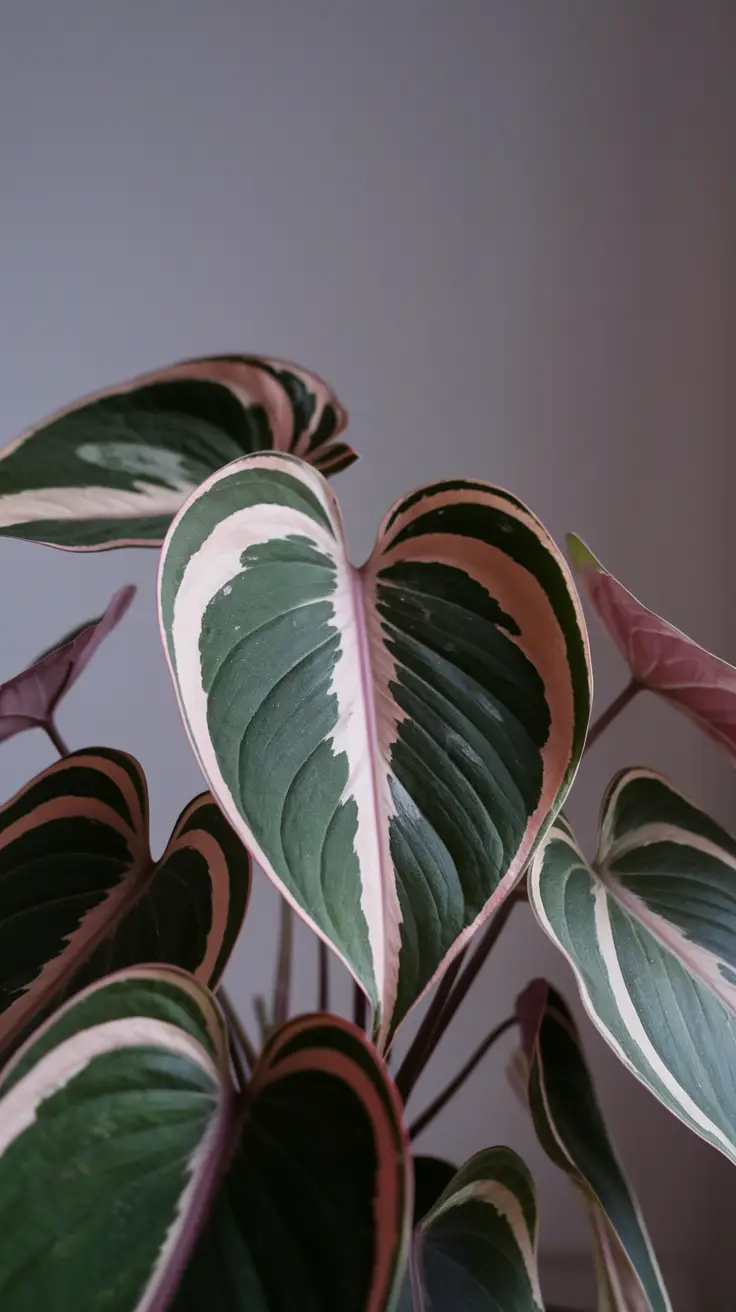
History and Cultural Significance
Piper Crocatum, commonly known for its striking foliage, has a rich history steeped in cultural significance. This plant originates from the lush rainforests of South America, particularly in Brazil and Peru. Traditionally, indigenous tribes have revered it for its medicinal properties and ornamental beauty. Its vibrant leaves often symbolize vitality and prosperity.
Medicinal Uses
In indigenous cultures, various parts of the Piper Crocatum plant are utilized for medicinal purposes. Herbalists often prepare infusions to treat ailments. These remedies are known for their effectiveness in alleviating respiratory issues and digestive problems.
Symbolism and Rituals
Piper Crocatum plays an essential role in cultural rituals. Its leaves are used in ceremonies to invite good fortune and ward off negative energies. Moreover, it serves as a symbol of connection to nature, promoting harmony within households.
- This plant is often featured in traditional art and crafts.
- Some cultures believe that having Piper Crocatum at home attracts positive energy.
- Its leaves are sometimes offered in religious ceremonies to honor deities.
Piper Crocatum’s vibrant colors and unique patterns make it a favored choice for decorative purposes. In modern horticulture, this plant gains popularity among houseplant enthusiasts due to its easy care and striking appearance.
Additionally, it has been incorporated into contemporary landscaping designs, enhancing the aesthetic value of various environments. The enduring legacy of Piper Crocatum lies in its ability to bridge ancient traditions with modern life. As such, it continues to thrive in homes and gardens around the world.
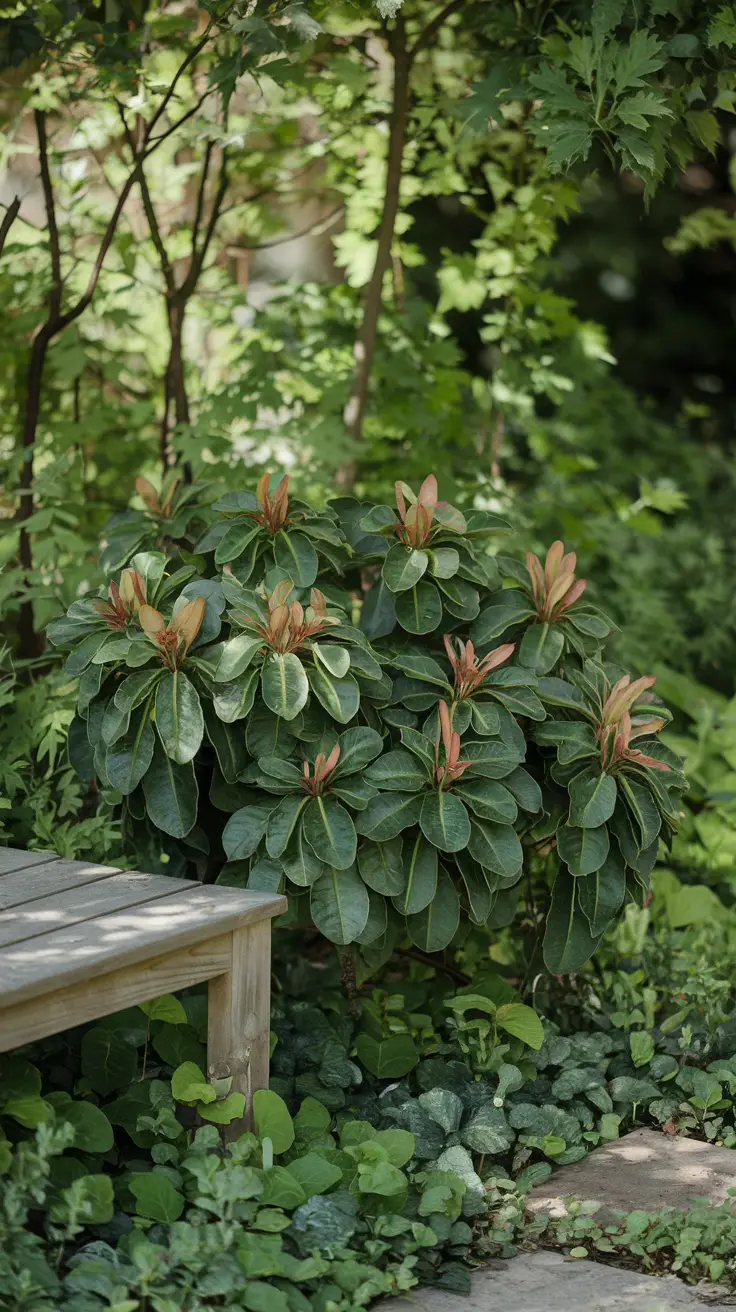
Ideal Growing Conditions for Piper Crocatum
Piper Crocatum thrives in a warm, humid environment that mimics its natural tropical habitat. The optimal temperature for growth is between 70°F and 85°F. While it can tolerate some lower temperatures, exposure to cold drafts can be detrimental. Therefore, maintaining warmth is crucial for the health of this plant.
Light Requirements
This plant does best in bright, indirect light. Placing your Piper Crocatum near a window that receives filtered sunlight will enhance its growth. Direct sunlight can scorch the leaves, leading to brown edges and a less attractive appearance. Furthermore, insufficient light will inhibit its growth and result in leggy stems.
Soil Conditions
Piper Crocatum prefers a well-draining potting mix. A combination of peat, pine bark, and perlite works best. This mix ensures that the roots remain aerated and do not rot. Regularly check the moisture of the soil. Keep the soil consistently moist but never soggy.
Humidity Levels
High humidity is essential for the Piper Crocatum. Aim for humidity levels above 60%. You can increase the humidity by misting the leaves regularly or placing the pot on a tray filled with water and pebbles. This will help create a mini greenhouse effect.
Watering Practices
Water your Piper Crocatum when the top of the soil feels dry. Avoid letting the soil dry out completely, as this can lead to stress in the plant. Additionally, using room temperature water can help the plant absorb moisture better.
Fertilization
During the growing season, use a balanced liquid fertilizer every month. Diluting the fertilizer to half its strength can prevent chemical burn. It’s also beneficial to cease fertilization in the fall and winter.
| Condition | Ideal Level |
|---|---|
| Temperature | 70°F – 85°F |
| Light | Bright, indirect |
| Humidity | Above 60% |
| Soil Type | Well-draining, peat-based |
| Watering | Keep soil moist but not soggy |
By following these ideal growing conditions, your Piper Crocatum can flourish beautifully, showcasing its stunning foliage.
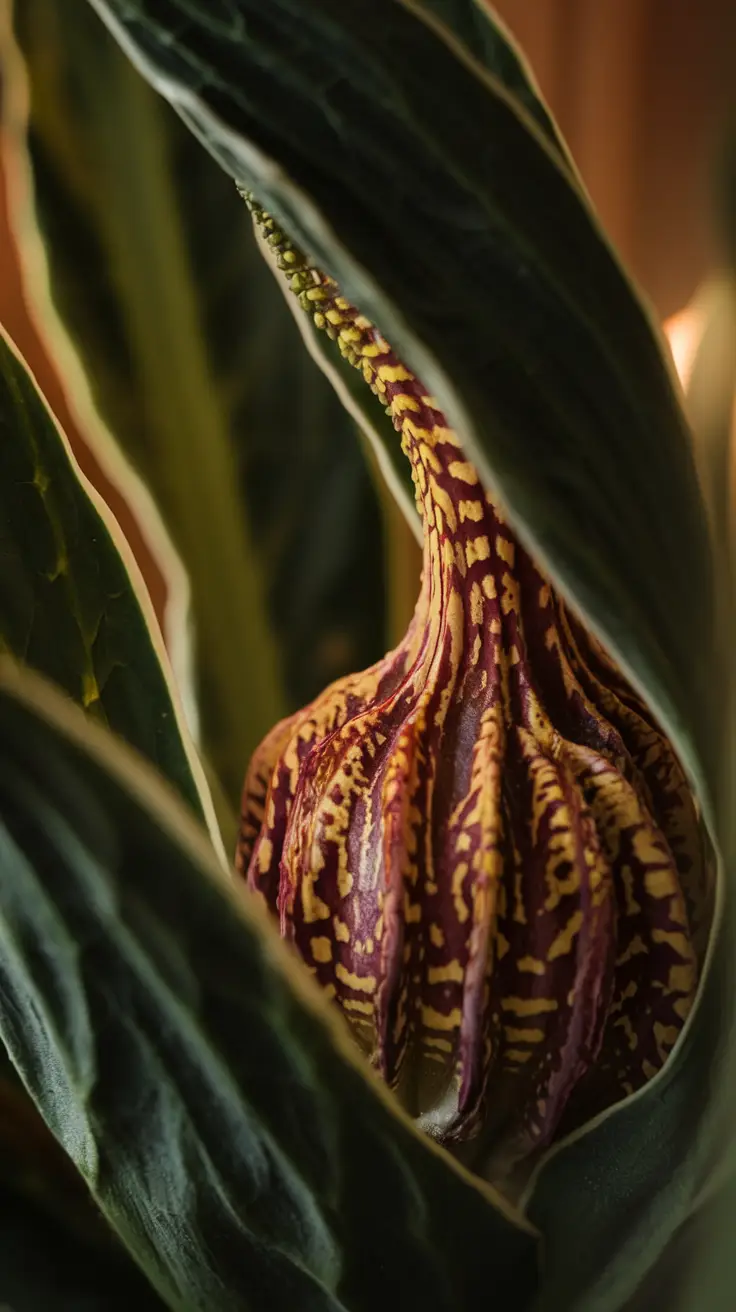
Plant Care and Maintenance
Piper Crocatum requires attentive care to thrive. This tropical plant loves humidity, so keeping it indoors near a humidifier is beneficial. Ensure your plant has indirect sunlight exposure. Direct sunlight can scorch its leaves.
Watering Requirements
Watering is crucial for the health of your Piper Crocatum. Check the soil regularly. Here are some tips on how to water:
- Water when the top inch of the soil feels dry.
- Avoid overwatering; it can lead to root rot.
- Use room-temperature water for best results.
Soil and Fertilization
A well-draining potting mix works best. You can use a combination of peat moss and perlite. Additionally, fertilize your Piper Crocatum every month during the growing season. A balanced liquid fertilizer will provide necessary nutrients.
Temperature and Humidity
Piper Crocatum prefers warmer temperatures. Ideal conditions range from 65°F to 85°F (18°C to 29°C). Also, maintain high humidity levels to replicate its natural environment. If you live in a drier area, consider the following:
- Regularly mist the leaves.
- Place a humidity tray filled with water under the pot.
- Group your plants together to increase humidity.
Pruning and Repotting
Regular pruning encourages bushier growth. Remove any yellow or damaged leaves as needed. It’s also important to repot your plant every couple of years. Choose a pot that is slightly larger to allow for growth.
Common Pests and Problems
Piper Crocatum may attract pests like spider mites and aphids. Regularly check the undersides of leaves. Use insecticidal soap or neem oil for treatment. Moreover, watch for signs of stress, such as yellowing leaves or wilting.
With proper care, your Piper Crocatum can become a beautiful addition to your indoor plant collection. Pay close attention to its needs, and it will reward you with stunning foliage!
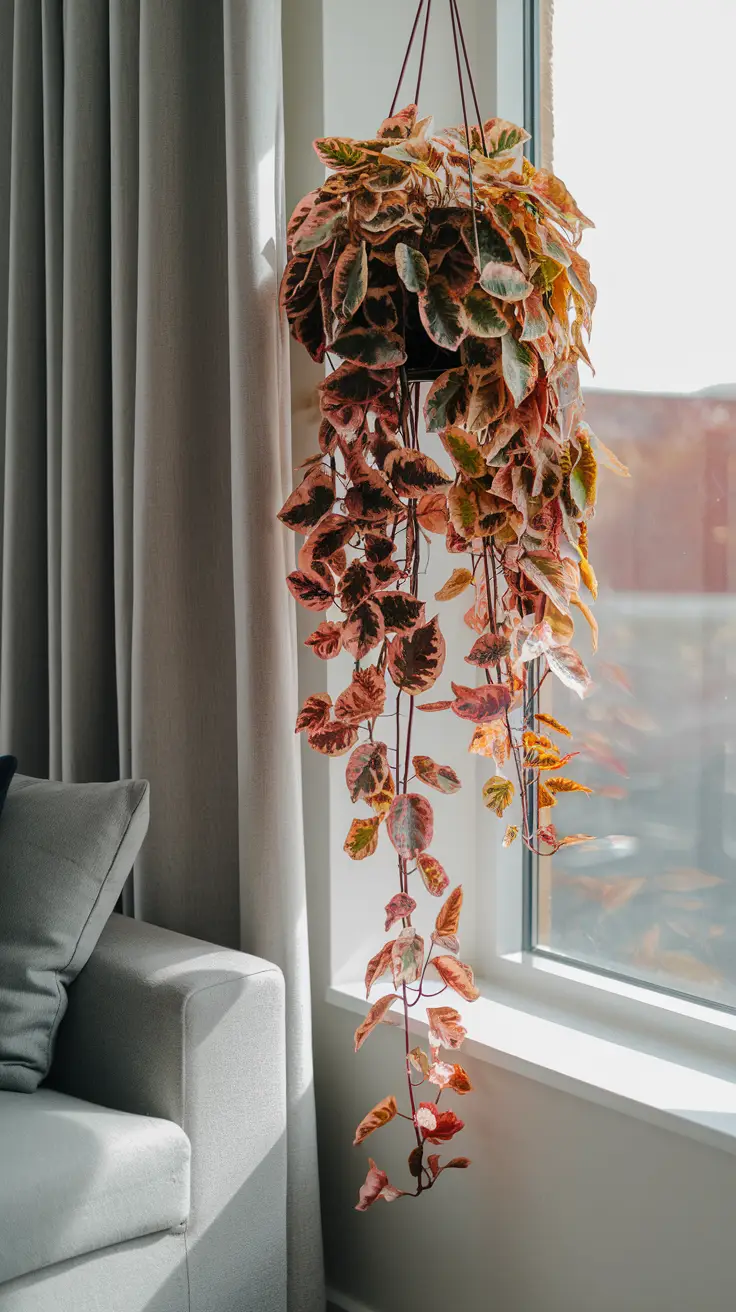
Propagation Techniques for Piper Crocatum
Propagating Piper Crocatum can be a rewarding endeavor. This species thrives well when propagated through stem cuttings. To begin, select a healthy stem and cut it just below a node. Ensure your cutting is approximately 4 to 6 inches long. This size allows sufficient energy for rooting. Next, remove the lower leaves to prevent rot when placed in a medium.
Choosing the Right Medium
For optimal results, use a well-draining potting mix. A mixture of peat moss and perlite works well. Once you prepare the medium, dip the cut end of your stem in rooting hormone. This step is not necessary but can enhance rooting success. Insert the cutting into the mix, ensuring the node is buried.
Creating the Right Environment
After placing the cutting in its medium, maintain humidity. Covering the pot with a plastic bag can help. However, ensure good air circulation to prevent mold. Place the pot in a warm area with bright, indirect light. This will induce quicker root development. Check for moisture regularly, but avoid overwatering.
Timing for Roots
Within 4 to 6 weeks, you should notice roots forming. Gently pull on the cutting. If you feel resistance, roots have likely developed. At this stage, you can remove the plastic cover. Gradually acclimate the new plant to less humid conditions. This will help your Piper Crocatum adapt to its new environment.
Once rooted successfully, transplant your new plant into a spacious pot. Choose a container that allows for growth. Water the plant thoroughly after transplanting, and ensure it receives adequate light as it grows. Following these propagation methods will lead to healthy Piper Crocatum plants flourishing in your collection.
Common Problems and Solutions
Piper Crocatum is a lush, tropical plant that can experience several issues. Identifying these common problems early can help you maintain a healthy plant. Here are some typical challenges and their solutions:
Pests
Piper Crocatum can attract pests like spider mites and aphids. These pests are often hard to spot. Regularly inspect your plant for webs or tiny insects.
- For spider mites, increase humidity to deter them.
- Aphids can be treated with insecticidal soap.
- Neem oil is an effective organic option.
Yellowing Leaves
Yellowing leaves can indicate overwatering or nutrient deficiency. It is essential to check the soil moisture and the nutrient levels.
- If overwatered, allow the soil to dry between waterings.
- For nutrient deficiencies, consider using a balanced fertilizer.
Leaf Dropping
Leaf drop can occur due to sudden environmental changes. Piper Crocatum prefers stable conditions. Keep your plant away from drafts and temperature fluctuations.
Root Rot
Root rot is a serious issue for Piper Crocatum. It usually results from overwatering and poorly draining soil. Make sure your pot has drainage holes.
- Use a well-draining potting mix.
- If root rot occurs, remove the plant from the pot and trim affected roots.
Common Diseases
Fungal diseases can affect Piper Crocatum, especially in humid conditions. Avoid wetting the leaves during watering.
| Disease | Symptoms | Solution |
|---|---|---|
| Powdery Mildew | White powdery spots on leaves | Use fungicides and improve air circulation |
| Leaf Spot | Brown, black, or yellow spots | Remove affected leaves and use fungicides |
By addressing these common problems, you can keep your Piper Crocatum thriving. Always monitor your plant for any signs of distress. Swift action will lead to better health and growth.
Seasonal Care Adjustments
Seasonal care adjustments for Piper Crocatum are essential for its health. These tropical plants require specific attention throughout the year.
Spring and Summer Care
During spring and summer, ensure your Piper Crocatum receives ample sunlight. Ideally, place it in a location with indirect light. Keep the soil consistently moist but avoid waterlogging. Additionally, fertilizing every four weeks will promote growth.
Fall and Winter Care
As seasons change, so do the needs of your Piper Crocatum. In fall, reduce watering frequency. The plant enters a dormant phase and requires less moisture. In winter, keep it in a warmer area to prevent cold damage.
- Monitor humidity levels; these plants thrive in higher humidity.
- Adjust watering based on the changing temperature.
- Reduce fertilizer application in the fall and winter months.
By following these seasonal care adjustments, your Piper Crocatum will remain healthy and vibrant year-round.
Microclimate Setup Tips
Creating the right microclimate for your Piper Crocatum is essential for its health and growth. This plant thrives in a warm, humid environment, mimicking its natural tropical habitat. To achieve optimal conditions, consider the following tips:
Temperature Control
Maintain a temperature range between 65°F to 85°F (18°C to 29°C). Avoid sudden temperature fluctuations, as they can stress the plant.
Humidity Levels
Piper Crocatum requires high humidity levels—ideally above 60%. You can increase humidity by using a humidifier or placing a tray of water near the plant.
Light Requirements
This plant prefers bright, indirect light. Direct sunlight can scorch its leaves. Position it near a window with filtered light or use sheer curtains to diffuse harsh sunlight.
Air Circulation
Proper air circulation helps prevent fungal diseases. You can achieve this by avoiding overcrowding and placing the plant in a well-ventilated area.
Supplemental Tips
- Monitor the plant’s response to changes in the environment.
- Consider using pebbles in the water tray to increase humidity.
- Rotate the plant occasionally for even light exposure.
- Check for pests regularly as they thrive in warm conditions.
By following these tips, you will help your Piper Crocatum flourish in a well-suited microclimate.
Frequently Asked Questions
Piper Crocatum is a popular choice among houseplant enthusiasts. It features striking foliage and a unique growth pattern. Many wonder about its care requirements. Regular watering is essential, but overwatering can be detrimental. Ensure the soil is well-draining and allow it to dry slightly between watering sessions.
Common Care Questions
A frequently asked question is about light conditions. Piper Crocatum thrives in bright, indirect light. However, it can tolerate lower light but will grow slower. Additionally, fertilization is key; use a balanced fertilizer during the growing season. This helps support robust growth and vibrant leaf colors.
What About Humidity?
Humidity is also crucial for Piper Crocatum. This plant appreciates higher humidity levels. Consider placing it in a bathroom or using a humidifier. Another concern is pest management. Regularly inspect leaves for pests like spider mites. Early detection allows for effective treatment, ensuring the plant remains healthy.
These tips help ensure your Piper Crocatum thrives. Remember to adjust care as seasons change, and enjoy the beauty it brings to your space.
Summary and Recommendations
Piper Crocatum is a striking addition to any indoor garden. Its large, heart-shaped leaves are not only visually appealing but also contribute to its overall health. This plant thrives in warm, humid environments, so consider placing it in a spot with ample moisture.
For optimal growth, maintain a temperature range of 65°F to 80°F. Ensure it receives bright, indirect sunlight to avoid leaf scorch. Regular watering is essential, but be cautious not to overwater. Allow the top inch of soil to dry out between waterings.
Additionally, using a well-draining potting mix can help prevent root rot. Fertilize with a balanced fertilizer every month during the growing season for the best results. Overall, Piper Crocatum is relatively low-maintenance and can flourish with these simple care routines.



